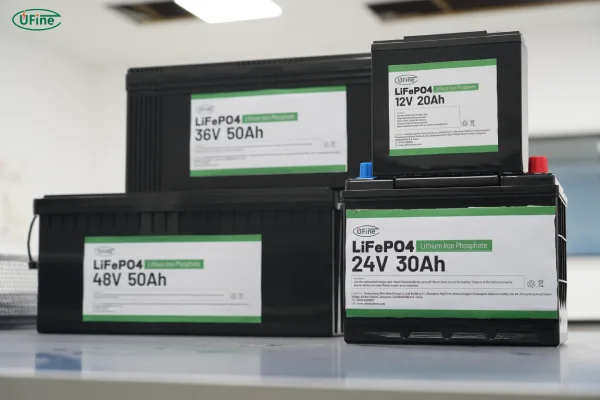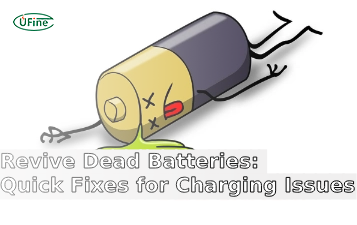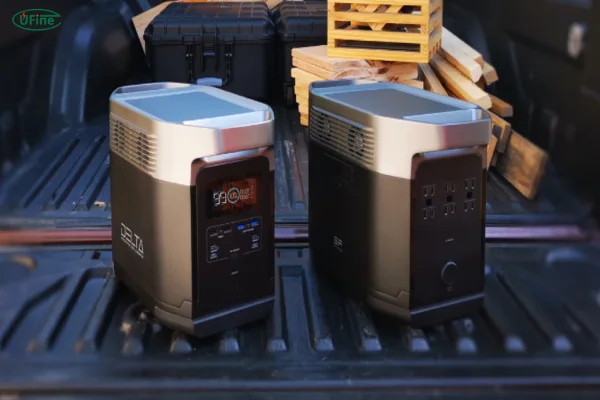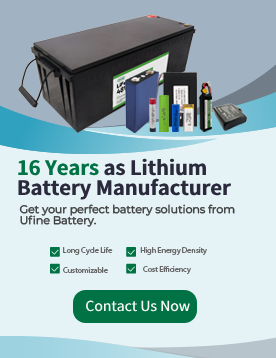
- Part 1. The rise of battery-powered generators
- Part 2. Understanding battery-powered generators
- Part 3. Factors that affect runtime of generator battery
- Part 4. Typical runtime by capacity
- Part 5. How to maximize generator battery runtime
- Part 6. Generator battery lifespan: years of use
- Part 7. Real-world examples
- Part 8. How to calculate generator battery runtime
- Part 9. When to recharge and replace generator battery
- Part 10. Final words
Part 1. The rise of battery-powered generators
As concerns about environmental sustainability grow and the need for portable, emission-free energy solutions increases, battery-powered generators have rapidly emerged as a compelling alternative to traditional gas generators. These clean, compact, and versatile power sources provide reliable energy without the noise, fumes, or maintenance demands associated with gasoline-powered models.
What makes these generators even more attractive is their versatility. They are ideal for emergency power during blackouts, convenient energy for camping trips, and essential support for off-grid living. With zero emissions and whisper-quiet operation, they are particularly well-suited for both indoor and outdoor applications.
However, a common and important question persists among potential users and buyers: How long do battery-powered generators last?
To answer this, we must look at two aspects:
- Runtime: How long a fully charged battery can power your devices.
- Lifespan: How many years the battery will continue functioning effectively before it needs replacement.
This comprehensive guide will explore both in depth.
Part 2. Understanding battery-powered generators
What Is a Battery Generator?
A battery-powered generator, often referred to as a portable power station, is a rechargeable device that stores electricity and provides it on demand through AC outlets, USB ports, and DC outputs. These devices do not generate electricity themselves but instead store energy drawn from an external power source such as a wall outlet, solar panel, or car charger.

How They Work
Internally, battery generators rely on lithium-ion or lead-acid batteries to store electricity. An inverter then converts the stored direct current (DC) into alternating current (AC), which powers household electronics.
Types of Batteries Used
-
Lithium-Ion (LiFePO4): Lightweight, long-lasting (2,000–5,000 cycles), and efficient. Common in premium models like EcoFlow and Bluetti.
-
Lead-Acid: Cheaper but heavier, shorter lifespan (500–1,000 cycles), and slower charging. Found in older or budget models.
Common Uses
-
Emergency backup (blackouts, storms)
-
Camping & RV trips (portable power)
-
Off-grid living (solar-compatible setups)
-
Worksites (powering tools without gas)
AGM VS Lithium VS Lead-Acid Battery: Comprehensive Comparison
Ufine Battery, a leading custom lithium battery manufacturer in China, provides a full range of lithium battery solutions—LiPo, LiFePO4, 18650, high-rate, and ultra-thin batteries—that are often integrated into high-performance battery generators. Contact us now.
Part 3. Factors that affect runtime of generator battery
1. Battery Capacity (Watt-Hours / Wh)
Battery capacity is the most direct determinant of runtime. It refers to the total amount of energy stored in the generator. For example, a 1000Wh generator can theoretically run a 100W device for 10 hours.
2. Power Demand (Load Wattage)
The wattage of the connected devices directly influences how quickly the battery drains. Charging a smartphone draws about 10W, whereas running a microwave could use up to 1500W.
3. Battery Chemistry
Battery types matter significantly. LiFePO4 batteries offer greater energy density, thermal stability, and longevity compared to traditional lead-acid batteries. Ufine Battery’s lithium battery solutions are tailored for such high-efficiency applications, making them ideal for long-lasting generator use.
4. Inverter Efficiency
Inverters are not 100% efficient; most lose about 10% to 20% of power during DC-to-AC conversion. A high-quality inverter can reduce energy waste and extend usable runtime.
5. Environmental Conditions
Batteries are sensitive to temperature. Extreme cold reduces chemical activity within the battery, while high temperatures can cause overheating or even degrade internal components. Ideal operation temperature ranges are typically 0°C to 30°C (32°F to 86°F).
Part 4. Typical runtime by capacity
Let’s consider the average runtime for generators of various capacities:
Small Units (300Wh – 500Wh)
- Runtime: 2–8 hours
- Use case: Smartphones, LED lights, small routers
- Example: A 500Wh unit running a 50W fan = ~10 hours
Medium Units (1000Wh – 2000Wh)
- Runtime: 4–12 hours
- Use case: Mini fridges, CPAP machines, laptops
- Example: A 1000Wh generator running a 100W fridge = ~8–10 hours
Large Units (3000Wh+)
- Runtime: 8–24+ hours
- Use case: Whole-house backup, power tools, electric cooktops
- Example: A 3600Wh unit powering a 150W fridge and 100W light = ~12 hours
Part 5. How to maximize generator battery runtime
There are several strategies users can employ to get the most out of each charge:
- Use energy-efficient devices (LEDs, inverter appliances)
- Prioritize essential loads and disconnect non-essentials
- Recharge using solar panels to maintain continuous power
- Operate within optimal temperature ranges
- Utilize eco or sleep modes if the unit supports them
With the right battery configuration, such as Ufine’s high-capacity lithium or LiFePO4 cells, runtime can be substantially extended.
Part 6. Generator battery lifespan: years of use
While runtime concerns how long a single charge lasts, lifespan addresses how long the battery will remain usable over time.
Lithium-ion (LiFePO4):
- 2,000–5,000 charge cycles
- Approximately 10+ years with regular use and proper care
Lead-acid:
- 500–1,000 charge cycles
- Around 3–5 years
Lifespan-Affecting Factors:
- Depth of Discharge: Avoid discharging below 20%.
- Charging Habits: Slow and partial charging is better than fast, full discharges.
- Storage: Store at ~50% charge in a cool, dry place when not in use.
Battery packs built with Ufine’s advanced lithium technology are engineered for long service lives, especially under demanding use cases like mobile workstations or solar storage.
Part 7. Real-world examples
Jackery Explorer 1000 (1002Wh)
- Powers a 60W television for ~15 hours
- Ideal for camping and light backup needs
EcoFlow Delta Pro (3600Wh)
- Can support a refrigerator (150W) for up to 24 hours
- Expandable capacity and home integration available
Bluetti AC200P (2000Wh)
- Powers a 100W CPAP machine for ~18 hours
- Excellent for medical equipment and extended outdoor use
Part 8. How to calculate generator battery runtime
Use the formula:
Runtime (hours) = Battery Capacity (Wh) ÷ Device Wattage (W)
Example: 500Wh battery ÷ 50W fan = 10 hours (ideal)
Now adjust for efficiency loss (~15%):
- 10 hours × 0.85 = 8.5 actual hours
Using Ufine Battery’s high-rate lithium cells ensures more consistent discharge rates and reduces loss.
Part 9. When to recharge and replace generator battery
Recharge:
- When battery drops to 20–30% to avoid deep discharge damage
Replace:
- If runtime is below 70% of original capacity
- If swelling, overheating, or safety alerts occur
- If device shuts off frequently despite full charge
Generators with user-replaceable battery packs, such as those custom-built with Ufine lithium cells, offer extended serviceability.
Part 10. Final words
Battery-powered generators offer an eco-friendly, quiet, and low-maintenance energy solution for diverse applications. Their runtime is mainly governed by battery capacity and load, while their lifespan depends on battery chemistry, usage, and storage conditions.
To extend the lifespan and performance:
- Choose LiFePO4 batteries for durability
- Avoid full discharges
- Store properly and avoid extreme temperatures
- Use efficient appliances
Related Tags:
More Articles

How to Revive Dead Batteries and Fix Lithium Batteries that Won’t Charge?
Learn how to safely revive a dead lithium-ion battery, troubleshoot charging issues, fix lithium battery problems, and extend battery life.
LiPo Battery Charge Rate Calculator
Calculate safe LiPo, Li-ion, and LiFePO4 battery charging times and rates. Prevent overcharging, extend life, and optimize performance.
4.0Ah vs. 2.0Ah Battery: Key Differences and Which is Best for Your Projects
Compare 2Ah vs 4Ah batteries: meaning, runtime, weight, and best tool uses. Learn if 4.0Ah is worth it for your cordless tools and DIY projects.
How Long do Lithium Batteries Last?
Learn how long lithium batteries last, their life expectancy, cycle life, and tips to extend lithium-ion battery lifespan effectively.
Lithium Battery Temperature Range: Everything You Need to Know
Learn optimal lithium battery temperature ranges for use and storage. Understand effects on performance, efficiency, lifespan, and safety.



